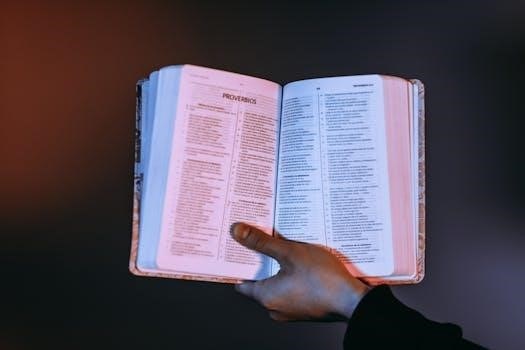Converting Microsoft Project files to a single-page PDF is a straightforward process that enhances readability and sharing convenience․ This method ensures all project details are neatly organized in one document, making it ideal for presentations and professional distribution․

Benefits of Single-Page PDF Conversion
Converting Microsoft Project files to a single-page PDF offers numerous advantages, particularly in terms of organization, readability, and convenience․ A single-page format ensures that all project details, such as timelines, tasks, and resources, are displayed in a cohesive and easy-to-follow manner․ This eliminates the need to navigate through multiple pages, making it ideal for presentations, meetings, and professional distribution․
One of the primary benefits is enhanced readability․ A single-page layout allows for better visual representation of complex project data, reducing the risk of misinterpretation․ Additionally, it streamlines collaboration, as stakeholders can quickly grasp the entire project overview without flipping through multiple pages․
Another significant advantage is the ease of sharing․ Single-page PDFs are more convenient to email, print, or store, making them a practical choice for teams working across different locations․ This format also ensures consistency, as the content remains unchanged regardless of the device or software used to view it․
Finally, single-page PDF conversion is a time-saving solution for professionals who need to present project plans clearly and efficiently․ It combines functionality with simplicity, ensuring that the final document is both professional and accessible․

Methods for Conversion
Several methods are available to convert Microsoft Project files to a single-page PDF, including online conversion tools, built-in export features, third-party software, and offline techniques․ Each method offers unique advantages, ensuring flexibility and efficiency for various user needs and preferences․
Using Online Conversion Tools
Online conversion tools provide a quick and efficient way to convert Microsoft Project files to a single-page PDF․ These tools are easily accessible and often free, requiring no registration or additional software installation․
To use these tools, simply upload your Microsoft Project file to the platform, select PDF as the output format, and download the converted file․ Many online converters support multiple file formats and offer options to adjust settings like page layout and margins for optimal results․
These tools are particularly useful for users who need a fast solution without technical expertise․ They are accessible from any web browser and support various operating systems, making them a versatile choice for converting project files to PDF․ Additionally, some tools allow users to combine multiple PDFs into one document, enhancing organization and readability․ Overall, online conversion tools are a convenient and user-friendly option for achieving a single-page PDF from Microsoft Project files․
Built-in Export Features in Microsoft Project
Microsoft Project offers built-in export features that allow users to directly convert project files to PDF format․ This method is straightforward and eliminates the need for additional software or online tools․
To use this feature, open your project file in Microsoft Project, navigate to the File menu, and select Save As․ Choose PDF as the file format from the available options․ Before saving, you can customize settings such as page layout, margins, and orientation to ensure the output meets your requirements․
This built-in export feature is particularly useful for maintaining the original formatting and structure of your project file․ It ensures that all task details, timelines, and resources are accurately preserved in the PDF document․ Additionally, this method is ideal for users who prefer to work within the Microsoft Project environment without relying on external tools․
By using the built-in export features, you can efficiently create a single-page PDF that is both professional and easy to share․ This approach is recommended for users seeking a seamless and reliable conversion process directly within Microsoft Project․
Third-Party Software Solutions

Third-party software solutions provide robust tools for converting Microsoft Project files to PDF in a single page․ These tools often offer advanced features such as batch conversion, customization options, and high-quality output․ For instance, Aspose․Tasks for ․NET is a popular library that enables developers to convert MPP files to PDF programmatically with minimal code․ Additionally, there are user-friendly applications that allow users to upload their MPP files, select PDF as the output format, and download the converted document in seconds․
Some third-party tools also provide options to adjust page layout, scaling, and margins before conversion, ensuring the final PDF meets specific requirements․ These solutions are particularly useful for users who need to convert multiple project files or require more control over the output․ Many of these tools support other file formats, making them versatile for diverse needs․ With third-party software, users can achieve professional-grade PDF conversions efficiently and effortlessly, making them ideal for both personal and professional use․
Offline Conversion Techniques
Offline conversion techniques offer a reliable way to convert Microsoft Project files to a single-page PDF without relying on internet connectivity․ One common method involves using Microsoft Project’s built-in export features․ By opening the project file in Microsoft Project, users can navigate to the “File” menu, select “Save As,” and choose “PDF” as the output format․ This method allows adjustments to page layout, margins, and orientation to ensure the PDF is optimized for a single page․
Additionally, offline tools like Aspose․Tasks for ․NET provide robust solutions for developers, enabling programmatic conversion of MPP files to PDF with precise control over formatting․ For users preferring standalone applications, desktop-based PDF converters can handle MPP files directly, offering batch conversion and customization options․ These tools often support scaling content for readability and adjusting margins to fit all project details on a single page․
Offline techniques are particularly useful for users with large project files or those requiring consistent, high-quality PDF outputs․ They also ensure data privacy, as no files are uploaded to external servers․ By leveraging these methods, users can efficiently convert their project files to single-page PDFs while maintaining full control over the process․
Manual Adjustments for Precision
Manual adjustments are crucial for ensuring that your Microsoft Project file converts to a single-page PDF with precision․ Before exporting, review the project layout to ensure all essential columns, such as task names, durations, start and end dates, are visible․ This step helps in avoiding clutter and ensures that the PDF is concise and readable․
Adjust the time scale by selecting “Adjust time scale to fit the page” in the print settings․ This ensures that the timeline is compressed or expanded to fit neatly within the single-page format․ Additionally, manually select the number of columns to display, focusing on the most relevant information to maintain clarity․
Customize margins and orientation to optimize the layout further․ Reducing margins can help fit more content on the page, while portrait orientation is typically preferred for readability․ Fine-tuning these settings ensures that the final PDF is both visually appealing and professional․
By making these manual adjustments, users can ensure that their project plans are presented in a compact, organized, and easily shareable format, making it ideal for presentations or distribution to stakeholders․ This level of control guarantees that the PDF meets specific requirements and maintains the integrity of the original project details․

Choosing the Right Tool for Conversion
Selecting the right tool for converting Microsoft Project files to a single-page PDF is essential․ Opt for tools that support single-page layouts, offer customization options, and ensure high-quality output․ Consider both online converters and desktop applications for flexibility and reliability․
Features to Look for in Conversion Tools
When selecting a tool to convert Microsoft Project files to a single-page PDF, look for features that ensure accuracy and customization․ Key features include support for single-page layouts, adjustable margins, and orientation settings․ Tools that allow scaling content for readability are highly beneficial․ Additionally, opt for software that supports multiple file formats and provides preview options before conversion․ Online converters should offer drag-and-drop functionality and batch processing for efficiency․ For advanced users, tools with custom page numbering and watermark options are advantageous․ Ensure the tool maintains the original formatting of tasks, resources, and timelines․ Offline accessibility and integration with Microsoft Project are also valuable for seamless workflows․ Lastly, prioritize tools with user-friendly interfaces and reliable customer support to handle any conversion challenges effectively․

Customization Options
Customization options allow users to tailor their single-page PDF conversions to specific needs․ Adjust page layouts, scale content for readability, and set margins and orientation to ensure a professional and organized document․ These features enhance the final output’s clarity and presentation quality effectively․
Adjusting Page Layout
Adjusting the page layout is crucial for achieving a clean and organized single-page PDF․ Users can modify the arrangement of tasks, resources, and timelines to fit seamlessly into a single view․ Tools often allow selecting specific columns, such as task names, durations, start and end dates, ensuring only essential information is included․ Additionally, features like “Fit to Page” and “Adjust Time Scale” help in optimizing the layout for readability․ By customizing the page setup, users can ensure that their project plans are presented clearly and professionally, making it easier to share and review․ Proper layout adjustments also prevent clutter, allowing recipients to focus on key details without distraction․
Scaling Content for Readability
Scaling content for readability is essential when converting Microsoft Project files to a single-page PDF․ This ensures that all text and details remain clear and legible without the need for zooming․ Many conversion tools offer automatic scaling options that adjust the content to fit the page perfectly, maintaining readability while preserving the layout․ Users can also manually adjust the scale by selecting specific zoom levels or fitting the content to the page width or height․ This feature is particularly useful for project plans with dense information, ensuring that every task, resource, and timeline is easily visible․ Additionally, some tools allow users to customize font sizes and spacing, further enhancing readability․ Proper scaling ensures that the PDF is both visually appealing and functional, making it ideal for sharing and reviewing․ By optimizing the content’s scale, users can ensure their project plans are presented clearly and professionally, even in a single-page format․
Setting Margins and Orientation
Setting appropriate margins and orientation is crucial when converting Microsoft Project files to a single-page PDF․ Margins ensure that content does not appear cramped or cut off, while orientation determines whether the PDF is viewed in portrait or landscape mode․ Most conversion tools allow users to customize margin sizes, offering options such as narrow, default, or wide margins․ Portrait orientation is ideal for detailed project plans that require a vertical layout, while landscape orientation is better suited for wide timelines or Gantt charts․ Adjusting these settings ensures that the content is well-organized and visually appealing․ Some tools also offer automatic margin adjustment, which optimizes spacing based on the content․ Properly setting margins and orientation enhances the overall readability and professional appearance of the PDF․ This step is essential for ensuring that the single-page PDF is both functional and visually coherent, making it easier to share and review project details efficiently․ By tailoring these settings, users can create a polished and professional document that meets their specific needs․

Common Issues and Solutions
When converting Microsoft Project files to a single-page PDF, common issues include file size limitations, layout discrepancies, and conversion errors․ Solutions involve optimizing content scaling, adjusting page margins, and using reliable conversion tools to ensure accurate and seamless results․

Handling File Size Limitations
When converting Microsoft Project files to a single-page PDF, file size limitations can pose challenges, especially with large or complex project plans․ To address this, optimize content scaling by adjusting the zoom level or using tools that automatically scale content to fit the page․ Additionally, compress images within the document to reduce overall size without compromising quality․ If the file remains too large, consider splitting the project plan into smaller sections before conversion․ Utilize online tools that support compression during conversion, ensuring the PDF remains compact yet readable․ For further optimization, remove unnecessary columns or data from the project view before exporting․ Some tools also allow adjusting page margins and orientation to minimize space usage․ Exporting directly from Microsoft Project with the “Adjust time scale to page” option can also help reduce file size․ By implementing these strategies, you can create a compact, single-page PDF that maintains clarity and functionality․
Addressing Layout Discrepancies
When converting Microsoft Project files to a single-page PDF, layout discrepancies can occur due to differences in formatting and content arrangement․ To address this, ensure the project view in Microsoft Project is optimized for single-page conversion․ Adjust the zoom level or scaling options in your conversion tool to fit all content neatly․ If text or columns appear misaligned, manually adjust the page layout settings before exporting․ Some tools allow previewing the PDF layout, enabling you to make necessary adjustments on the fly․ Additionally, consider selecting specific columns or data to include in the PDF to avoid clutter․ For complex project plans, splitting the content into multiple sections or using landscape orientation can help maintain readability․ Online tools often provide features to auto-adjust layouts, minimizing manual intervention․ If discrepancies persist, exporting the project plan as an image and then converting it to PDF can preserve the exact layout․ By carefully tweaking these settings, you can achieve a well-formatted, single-page PDF that accurately reflects your project details․
Troubleshooting Conversion Errors
When converting Microsoft Project files to a single-page PDF, errors can arise due to file size limits, formatting issues, or corrupted data․ If you encounter an error message indicating the file exceeds size restrictions, consider splitting the project into smaller sections or compressing the PDF post-conversion․ Corrupted files can often be resolved by reopening the project, saving it, and retrying the conversion․ Ensure all columns and data are properly aligned in the project view before exporting, as misaligned content may cause layout issues in the PDF․ If text appears cut off, adjust the page layout settings or scale the content to ensure everything fits within the single page․ Online tools may offer auto-correction features to fix formatting discrepancies․ Additionally, verify that your conversion software is up-to-date, as outdated versions may fail to handle complex project files․ If errors persist, exporting the project as an image and then converting it to PDF can bypass formatting problems․ By addressing these common issues, you can efficiently troubleshoot and achieve a seamless conversion to a single-page PDF․

Best Practices for Conversion
Streamline your conversion process by adjusting layouts, scaling content, and setting margins before exporting․ Ensure all columns fit within a single page and preview the PDF to confirm readability․ Use reliable tools to maintain formatting and clarity, ensuring your final document is professional and well-organized․

Pre-Conversion Preparation
Before converting your Microsoft Project file to a single-page PDF, ensure your document is well-organized․ Check the layout, columns, and formatting to guarantee everything fits neatly on one page․ Adjust the scale of the timeline to optimize readability and make sure all essential details are visible․ Preview the view to confirm that the selected columns, such as task names, duration, start, and finish dates, are correctly displayed․ Use built-in features or reliable online tools to maintain consistency and avoid layout discrepancies․ Proper preparation ensures the PDF output is professional, clear, and ready for sharing or printing․ This step is crucial for achieving a polished and compact document that meets your needs․ By organizing your project details thoughtfully, you can ensure the final PDF is both functional and visually appealing․ Proper preparation simplifies the conversion process and enhances the overall quality of your document․
Post-Conversion Quality Check
After converting your Microsoft Project file to a single-page PDF, perform a thorough quality check to ensure the output meets your expectations․ Open the PDF to verify that all data, including task names, durations, and timelines, are accurately displayed․ Check for any formatting issues, such as misaligned columns or truncated text, which may require adjustments in the original file․ Ensure that the layout is consistent and that no critical information is missing or obscured․ Review the file size to confirm it is within acceptable limits for sharing or printing․ If necessary, use tools to further optimize the PDF, such as adjusting margins or orientation for better readability․ Finally, ensure the document is visually appealing and professional, as this is often the final step before sharing or presenting the project plan․ A thorough quality check guarantees that your single-page PDF is clear, complete, and ready for distribution․
Converting Microsoft Project files to a single-page PDF is a practical solution for enhancing readability, organization, and professionalism․ This process ensures that all project details, including timelines, tasks, and resources, are presented in a compact and easily shareable format․ By using online tools, built-in features, or third-party software, users can achieve high-quality results tailored to their needs․ Whether for presentations, reports, or archiving, a single-page PDF simplifies project documentation and improves accessibility․ Additionally, customization options allow users to adjust layouts, margins, and orientations for optimal viewing․ With the variety of tools available, converting Project files to PDF has never been more efficient or convenient; By following best practices and performing quality checks, users can ensure their PDF files are professional and ready for distribution․ This method not only streamlines project management but also enhances collaboration and communication among team members and stakeholders․

























